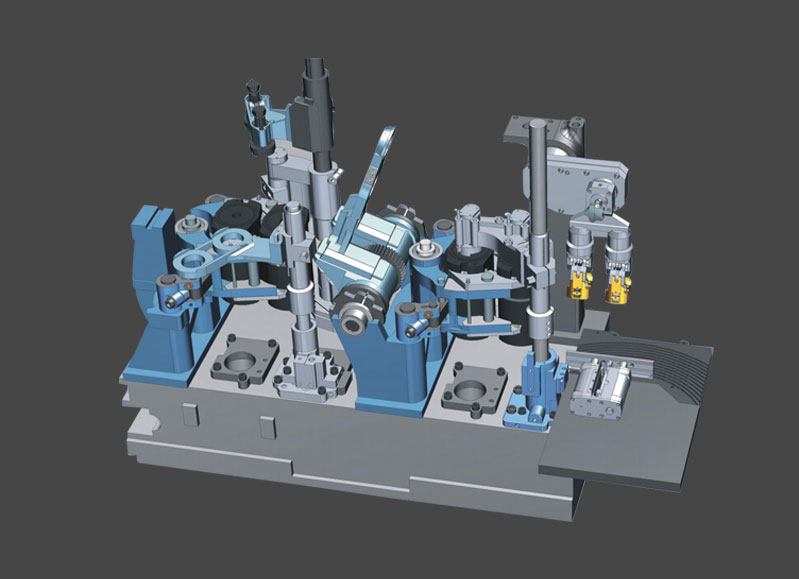Mold Holder Advantages:
Stability and precision: A mold holder provides a stable and rigid platform for the mold, ensuring accurate and consistent molding. It minimizes any movement or shifting of the mold during the injection process, which helps maintain the dimensional accuracy of the molded parts.
Ease of installation: Mold holders are designed to be easily installed and removed, allowing for quick mold changes. This facilitates efficient production and reduces downtime between mold setups.
Versatility: Mold holders are typically adaptable to different mold sizes and configurations, making them suitable for a wide range of injection molding applications. They can accommodate various mold types, including single-cavity molds, multi-cavity molds, and complex molds with intricate designs.
Inserts Advantages:
Enhanced part functionality: Inserts allow for the incorporation of additional features and functionalities into the molded parts. These features can include threaded inserts, metal reinforcements, inserts for overmolding, or any other component that needs to be integrated into the final product.
Cost savings: Inserts can help reduce overall manufacturing costs. By incorporating inserts into the mold, it eliminates the need for secondary operations such as post-molding assembly or machining. This streamlines the production process, reduces labor requirements, and potentially lowers production costs.
Design flexibility: Inserts provide greater design flexibility by allowing for the creation of complex parts with varying materials and properties. Different types of inserts can be used within a single mold to achieve specific characteristics or combine materials with distinct properties in a single molded part.
Improved part strength and durability: Inserts made from durable materials such as steel can enhance the strength and durability of molded parts. By incorporating metal inserts into plastic components, the load-bearing capacity, resistance to wear, and overall structural integrity of the final product can be significantly improved.
In summary, the advantages of mold holders include stability, precision, ease of installation, and versatility. Inserts offer enhanced part functionality, cost savings, design flexibility, and improved part strength and durability.
Choosing the right mold holder and inserts for your injection molding process requires careful consideration of several factors. Here are some key points to consider when making your selection:
Mold size and weight: Determine the size and weight of your mold to ensure that the mold holder can adequately support it. Consider the dimensions, configuration, and complexity of the mold to choose a holder that provides stability and rigidity during the injection molding process.
Mold type and application: Different mold types (e.g., single-cavity, multi-cavity, hot runner, cold runner) may require specific mold holder designs or features. Consider the specific requirements of your mold, such as cooling channels, ejection mechanisms, and gating systems, and ensure that the mold holder can accommodate these features effectively.
Material compatibility: Consider the materials used in both the mold holder and inserts. The mold holder should be made from a strong and durable material, such as steel or aluminum, to withstand the injection molding process. Similarly, the inserts should be compatible with the molding material and able to withstand the temperature and pressure conditions during injection.
Ease of installation and maintenance: Look for
mold holders and inserts that are designed for easy installation and removal. Quick-change systems can help reduce downtime during mold changes, improving overall production efficiency. Additionally, consider the ease of maintenance and accessibility for cleaning, inspection, and repairs.
Part design requirements: Assess the specific features or details you need to incorporate into the molded parts using inserts. Consider factors such as part functionality, aesthetics, strength, and assembly requirements. Choose inserts that can meet these design requirements effectively and provide the desired results in the final molded parts.
Supplier reputation and support: Select reputable suppliers with a track record of providing quality mold holders and inserts. Research customer reviews, check for certifications or industry standards compliance, and evaluate the supplier's technical support and after-sales service. This ensures that you receive reliable products and assistance when needed.
Cost considerations: Consider the cost-effectiveness of the mold holder and inserts. Evaluate the upfront investment, long-term durability, maintenance requirements, and potential savings in secondary operations or part defects. Strike a balance between quality and cost to ensure optimal value for your injection molding process.
By carefully considering these factors, you can choose mold holders and inserts that best meet the specific requirements of your injection molding process, ensuring efficient production and high-quality molded parts.



 English
English 中文简体
中文简体















 Nov 22,2024
Nov 22,2024
 +86-575-87637902
+86-575-87637902 +86-13606564271
+86-13606564271
 No. 20, Sanfeng Road, Diankou Town, Zhuji City, Zhejiang Province, China
No. 20, Sanfeng Road, Diankou Town, Zhuji City, Zhejiang Province, China